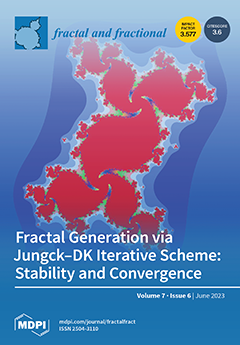A nonlocal boundary value problem for the fractional version of the Rayleigh–Stokes equation, well-known in fluid dynamics, is studied. Namely, the condition
, where
[...] Read more.
A nonlocal boundary value problem for the fractional version of the Rayleigh–Stokes equation, well-known in fluid dynamics, is studied. Namely, the condition
, where
is an arbitrary real number, is proposed instead of the initial condition. If
, then we have the inverse problem in time, called the backward problem. It is well-known that the backward problem is ill-posed in the sense of Hadamard. If
, then the corresponding non-local problem becomes well-posed in the sense of Hadamard, and moreover, in this case a coercive estimate for the solution can be established. The aim of this work is to find values of the parameter
, which separates two types of behavior of the semi-backward problem under consideration. We prove the following statements: if
or
, then the problem is well-posed; if
, then depending on the eigenvalues of the elliptic part of the equation, for the existence of a solution an additional condition on orthogonality of the right-hand side of the equation and the boundary function to some eigenfunctions of the corresponding elliptic operator may emerge.
Full article





